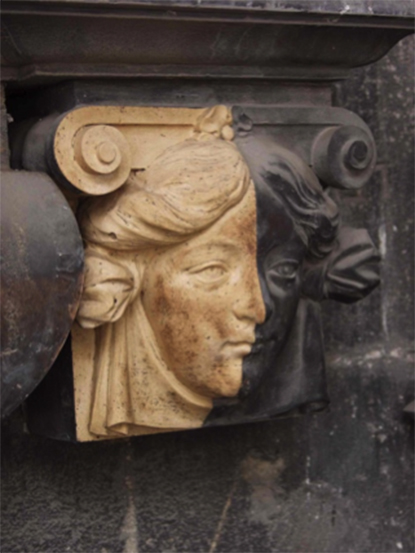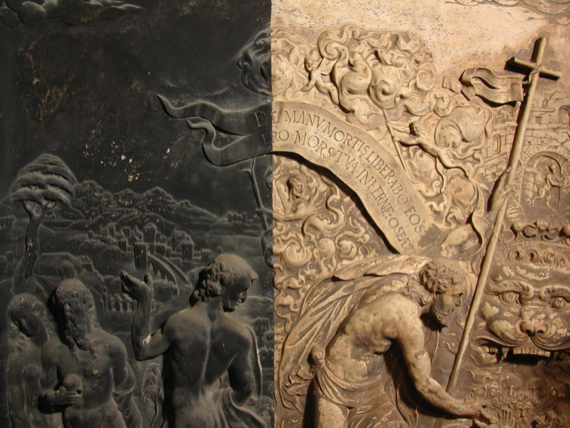Cleaning of natural stone surfaces with ND.YAG. laser-technology
The various stone cleaning techniques are without a doubt the most risky means of restoration available and may either benefit or harm a piece of art. The authenticity of an artwork or a historical building should be viewed by looking at its surface, which bears witness to history, with its associated ideologies, values and prevailing tastes. Overall cleaning without respecting the patina, the balance of colours, elutriation etc. reduces an object to a skeleton and greatly reduces its artistic impact. When presented in their former colours, classical marble sculptures, Roman and Gothic cathedrals and many other such treasures can deliver entirely different statements and messages, which may no longer be understood in the present day.
In principle, the cleaning process must not damage or destruct original – and therefore valuable – stone surfaces. The application of chemical or mechanical cleaning methods always involves the danger of creating uncontrolled and negative results. Especially after the application of chemically methods, consequential damages can never be excluded. Changes of colour, staining or later appearance of chemical reactions could create disagreeable surprises.
Therefore, we have been using ND:Yag laser technology to cleanse valuable stone objects since 1997. (St. Stephen's Cathedral, Vienna; Minorite Church, Vienna; Basilica Bad-Deutsch Altenburg, Lower Austria; Archaeological Museum Carnuntinum, Lower Austria; Palazzo Pubblico, Siena; Chiesa Maria Magdalena, Venice etc.)
The energy source for the apparatus comes from a rod made from yttrium aluminium garnet (YAG), essentially a carrier made from amorphous glass, treated with neodymium (Nd.), a mineral used to produce photons (light quantum) to the required wavelength (1064 nm = infrared). The feature that sets this laser apart is the particularly short duration of its light-induced pulses – less than 10 ns (nanoseconds). Every light-induced pulse creates a shockwave in the layer of dirt-deposits, which causes the impurities to flake off by means of micro resonance, without damaging the stone underneath, as this reflects the laser beam.
Since the laser technology is a pure physically treatment, there is no risk that later changes of the cleaning result could appear.
South Tower Portal, St. Stephen’s Cathedral, Vienna
During the laser-cleaning-process, original polychrome remains were found. When localised, this remains have been uncovered in a mechanical way.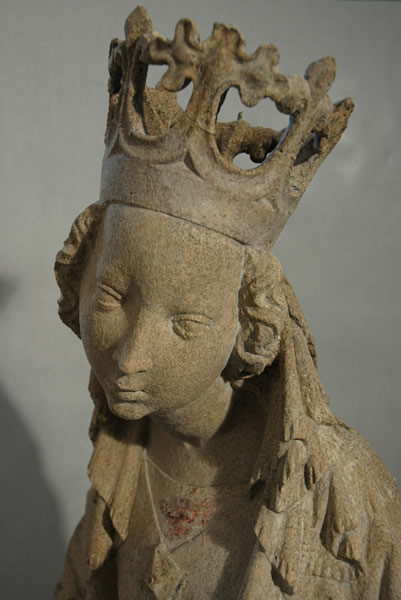
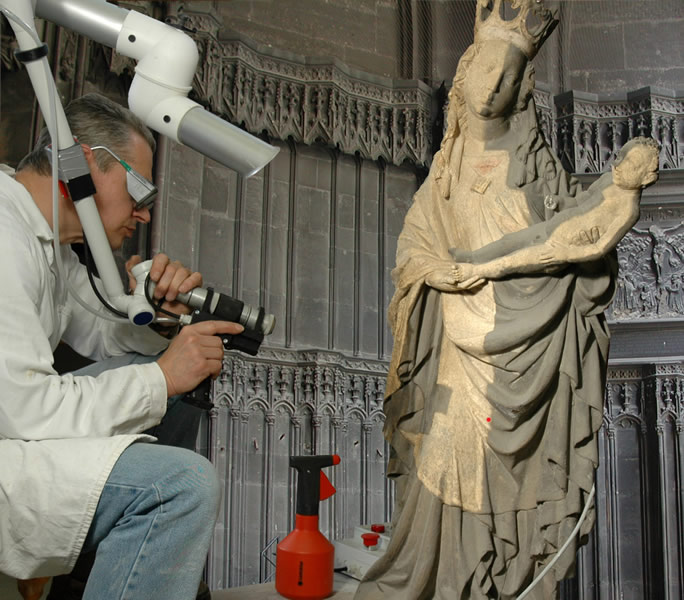
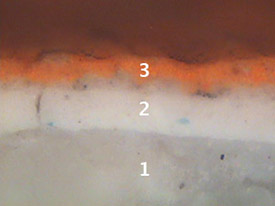
- Limestone
- 40 µm light blue: white lead with some Azurite, oil painting
- 30 µm red: Minium, oil
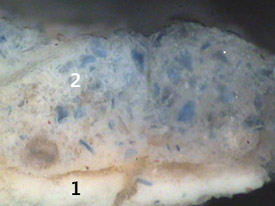
- white: white lead, strongly crackled, 1 blue Smalt grain on the surface, possibly only smudged from the overlying layer, strong oil browning on outside
- 200 µm blue: white lead, in contrast to sample with smalt, these from discoloured section, oil colour
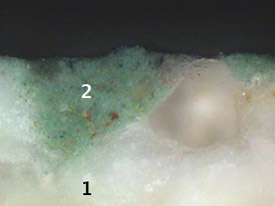
- Sand and Calcium Carbonate (Limestone)
- green paint residues in the depressions: white lead, barite, chalk, ochre and green earth and some ultramarine
St. Stephen's Cathedral Vienna, "Lackner" thomb, 1501
Laser-cleaning of "Solnhofener" limestone Laser-cleaning of "Solnhofener" limestone reliefs